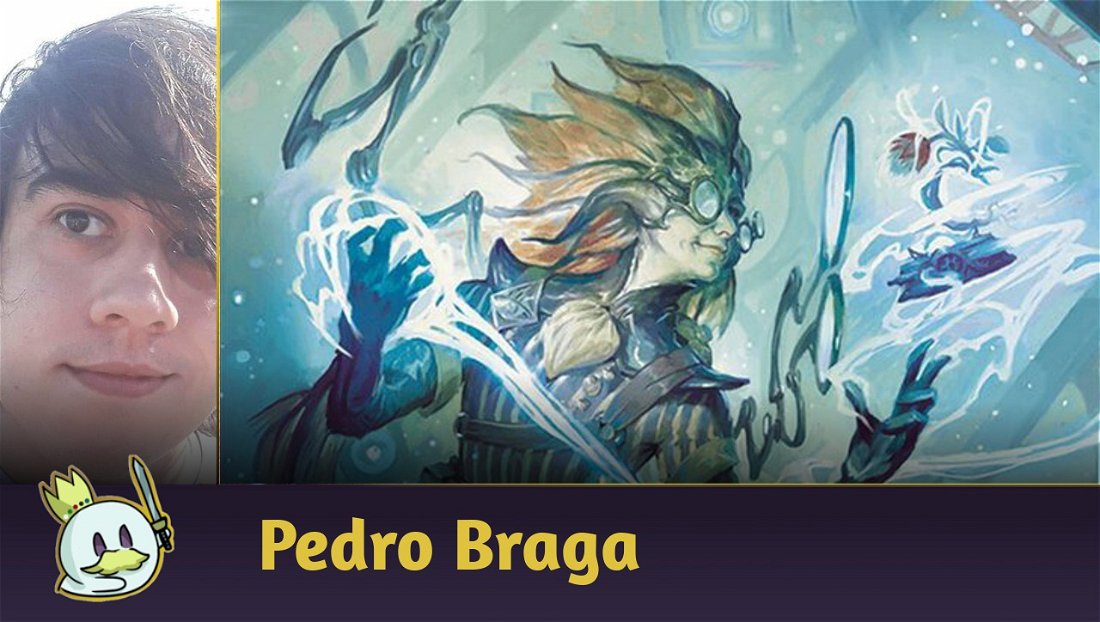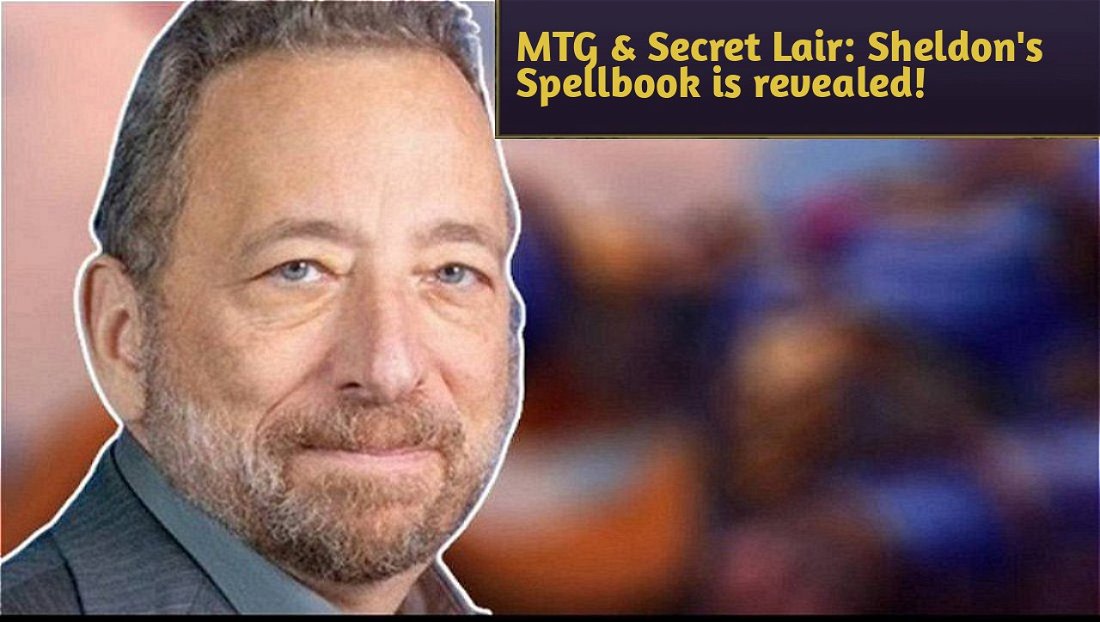If you've been following Cards Realm or my articles for a long time, you've probably noticed that it's been months or even more than a year since I last covered Pauper here.
In this period, Pauper seems to have changed a lot: mechanics such as Initiative have become pillars of some archetypes, Affinity gained a new combo-kill, Mono Red Aggro remains the best deck even after Monastery Swiftspear was banned and the Metagame has never been as focused on synergies as it is at the moment.
With so many changes, my return to Pauper was marked by choosing one of the most reliable decks in the format and one in which I have some experience in understanding the micro-interactions between its cards with a straightforward game plan, Azorius Affinity.
In this article, I cover its post-Murders at Karlov Manor version and present my Sideboard guide for the main matches of the current Pauper Metagame!
What is Azorius Affinity?
Azorius Affinity is another of the several variants of the archetype that emerged in the format after the Bridges came out in Modern Horizons II. The deck started to stand out in the Metagame after the All That Glitters downshift, which gave it one of the most efficient combo-kills in the format today.

Today, Azorius Affinity is one of the most popular versions of the archetype and manages to establish promising results in the format. Additionally, it has a more consistent manabase than the three-color versions and more explosive openings, while giving up board interaction and reach outside of combat in exchange for speed.
Being highly synergistic, it is an excellent option for those who want quick matches in the Leagues, but without giving up the most important decision trees, in addition to offering excellent flexibility with some of the best Sideboard cards in the current Metagame.
The Decklist
This is the list I've been using since the release of Murders at Karlov Manor.
It follows almost all the patterns of the most recent lists, with a low mana curve, effects that offer broad card advantage, and counterspells to protect your threats. Part of its plan is designed to seem absurd, being extremely dependent on All That Glitters to finish some games, while Myr Enforcer helps hold back some more aggressive decks and establish pressure.

The main difference is the insertion of Novice Inspector in the space that belonged to Frogmite, and it is worth considering whether this exchange is really beneficial: Frogmite offers greater speed for the list, with turns where we play two or more of them at once, we enchant another creature with All That Glitters and go for the aggressive clock.
Novice Inspector, on the other hand, is a little more geared towards grinding and extracting value from Moon-Circuit Hacker, as well as offering a more defensive body to block small creatures while leaving an artifact in play to add to affinity and/or other interactions.
Personally, I'm in favor of having eight one-drops that generate some value and block well. Our deck is fast, but not as fast as a Mono Red, and there are games where we need to extract the most value from our cards before putting on the pressure to overcome the opponent - in both cases, the new Inspector collaborates with the consistency.
Maindeck

The Inspector package doubles in function by offering means to extract more value and draw more cards, increase the number of artifacts in play and be the perfect bounces for Moon-Circuit Hacker and offer excellent card advantage plays while collaborating with All That Glitters.

Our combo/free-win package.
It's not uncommon for us to enchant Ornithopter or Gingerbrute with two All That Glitters and go for an immediate victory. Much of our list is essentially designed for this interaction.
Both are cards that stand out little outside these plays, but it is so absurd and win so many games that it's worth keeping their slots and building the deck around it. Additionally, Gingerbrute offers great breathing room against other aggressive archetypes.

Our artifacts are essential to cast Myr Enforcer early and turn Metallic Rebuke into a Mana Leak for just one blue mana, being essential to protect our enchanted creature against removal and/or to play around counterspells.
Springleaf Drum is a vital piece to enable the affinity of our cards while allowing us to use newly cast creatures as an extra resource to generate manna. As we have several one-drops, it is not uncommon for them to come into play “for free” because we can use them to cast another card in the same turn.

Our card advantage package includes the closest we have to Ancestral Recall for one mana in Pauper: Thoughtcast and Of One Mind, which has become much more consistent now that we have Novice Inspector as another human.

Our land package also follows the standard of what we expect in the format. An important advantage that this version offers compared to others is greater consistency and speed in accessing mana colors on the right turns.
Furthermore, the Azorius version allows the use of two basic lands. Although it seems like a minimal and even detrimental difference to the deck's proposal, not risking a lock from Dust to Dust and/or not losing the mana advantage against Cleansing Wildfire makes a difference in some matchups.
Sideboard

Pauper's current Metagame can be divided into four major archetypes: Mono Red Kuldotha, Affinity in its many variants, Dimir Terror and Golgari Gardens.
A Hydroblast playset is almost mandatory when we need to face so many Mono Red variants, a fast and efficient deck and, therefore, very popular. I wouldn't participate in an event or start a league with less than four copies (or even more with Blue Elemental Blast) in my Sideboard, and I recommend any player with blue do the same.
Dust to Dust is still the best answer to Affinity in the format. Fortunately, our variant has an easier time casting this spell as early as the second turn thanks to our manabase and the interaction with Springleaf Drum.
Relic of Progenitus interacts with the rest of the deck while also offering a way to delay Dimir Terror's plays, as well as working against archetypes in lower Tiers, such as Familiars or the recent Dread Return combo.

Finally, the last Sideboard slots are dedicated to having more options in certain matchups while offering a more efficient “out” against Golgari Gardens.
Destroy Evil deals with almost every creature that really matters in Garden, in addition to working against Affinity to destroy Myr Enforcer, a creature enchanted with All That Glitters, or even to destroy an enchantment against Bogles.
Obsidian Acolyte offers protection against any non-sacrifice removal - which we have an advantage as we have several efficient and low-cost one-drops. It is also an efficient way to take your opponent's Initiative and/or Monarch.
Sideboard Guide
Mono Red Kuldotha
IN

OUT

Diminish Terror
IN

OUT

Golgari Gardens
IN

OUT

Azorius Affinity
IN

OUT

Boros Synthesizer
IN

OUT

Conclusion
Azorius Affinity is one of the most fun and intuitive decks in the current Pauper Metagame. Its micro-interactions make it capable of playing against planes of attrition while also setting up a powerful combo-kill with All That Glitters and any creature with any evasion on the list.
It is an excellent option for playing Leagues and also for local tournaments and Challenges, it has an excellent learning curve and rewards players for dedicating themselves to understanding the nuances of the format and finding the best openings to win games.
Thanks for reading!














— Comentarios 0
, Reacciones 1
Se el primero en comentar